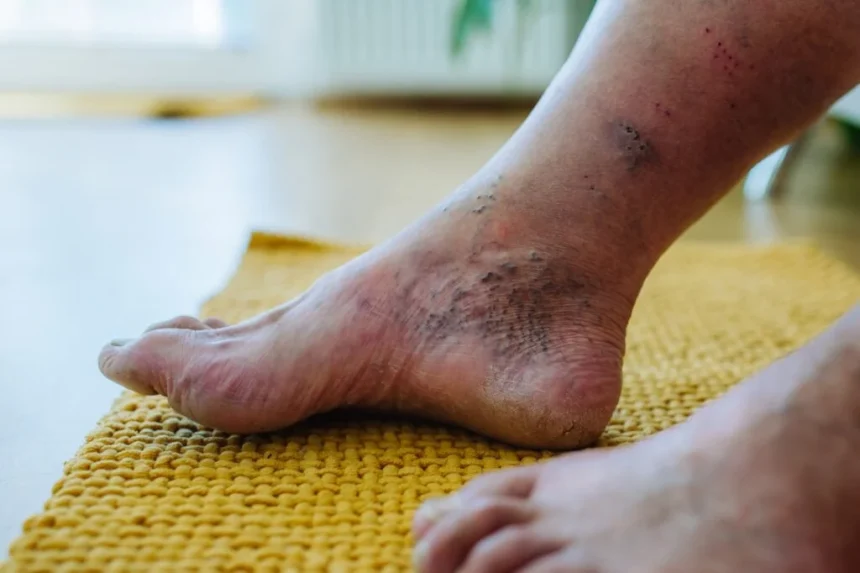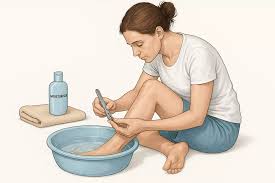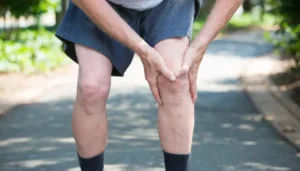Diabetes can directly affect nerve function and blood circulation in the feet, increasing the risk of ulcers, infections, and other complications. Nerve damage (neuropathy) and reduced blood flow are common conditions that can limit sensation and slow healing. Routine diabetic foot care supports the early detection of problems and helps prevent further complications.
Why Is Diabetic Foot Care Necessary?
Neuropathy causes reduced or lost sensation in the feet. This can prevent the detection of injuries such as cuts, blisters, or sores. Without prompt attention, minor injuries may progress and potentially lead to infections or ulcers. Symptoms like tingling, burning, or foot muscle weakness may also occur, impacting walking mechanics and increasing pressure on specific areas of the foot.
Reduced circulation is another risk factor for slow healing. Lower blood flow can mean less oxygen and fewer nutrients reach the tissues, slowing the body’s ability to repair damage. Even small wounds may persist, and the risk of infection rises. Monitoring and managing these issues lowers the likelihood of serious complications linked to diabetes.
What Habits Improve It?
Daily routines that address cleanliness, injury prevention, and observation provide the strongest protection for people with diabetes. There are a few best practices that one can utilize to prevent complications. Prominent methods include:
- Inspecting Feet: Examine feet daily for changes in skin color, swelling, cuts, sores, blisters, or calluses. Early detection of skin breakdown or signs of infection allows for timely intervention.
- Washing and Drying: Clean feet daily with lukewarm water and mild soap. Dry feet thoroughly after washing, especially between the toes, to discourage infection. Applying a thin layer of lotion to the tops and bottoms of the feet can reduce dryness, but do not moisturize between toes.
- Nail and Skin Care: Trim toenails straight across and file any sharp edges gently to reduce the risk of ingrown toenails and injury. Do not attempt to cut toenails too short or round the corners.
- Footwear Selection: Always wear shoes or slippers, indoors and outdoors, to prevent accidental injury. Choose well-fitted shoes with enough space for the toes, but avoid loose-fitting styles.
What Does Professional Foot Care Entail?
Regular professional examinations are an integral part of diabetic foot care. A podiatrist or healthcare professional will assess overall foot structure. The provider will also look for ulcers, pressure points, signs of infection, and skin changes.
Trimming toenails, removing corns or calluses, and monitoring changes in foot shape or structure are services that may be provided during visits. Podiatrists can recommend appropriate footwear and custom orthotics when needed to distribute pressure evenly and help avoid sores. They may advise on daily care adapted to the individual’s risk level. When wounds or ulcers are detected, treatment may involve specialized dressings, topical medications, wound debridement, or temporary use of medical footwear to minimize pressure.
Consult a Foot Specialist
Ongoing foot care routines combined with professional monitoring help reduce the risk of diabetic complications. Daily inspection, washing, and using proper footwear address many factors that contribute to foot injuries and slow healing. If any sores, skin changes, or slow-healing wounds develop, prompt medical attention from a licensed healthcare provider or podiatrist is recommended.













